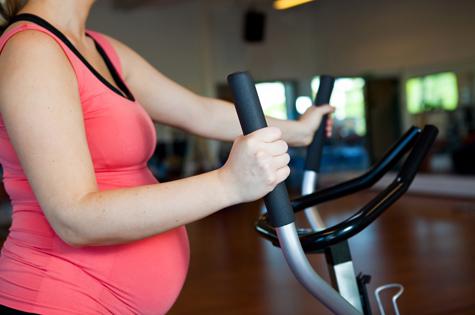With more women than ever choosing to stay active and fit during pregnancy, pre and post natal specialist Calum Wilson, author of Pregnancy and Beyond! A Practical Guide to Exercising During Pregnancy, warns that while pregnancy is a great motivation to get healthy, it is important for every mum-to-be to remember that there are certain exercises that should be avoided during this time.
“Research continues to reveal the amazing benefits of exercise during pregnancy, including increased energy levels, improved circulation, moods and sleep, and even a potential reduction in labour time,” says Wilson, who emphasises that pregnant women can generally participate in monitored exercise right up until they are 38 weeks into their pregnancy.
“Staying fit and active is a wonderful way to enhance the pregnancy journey and keep mum and bub in their best possible health, but that said, there are a few exercises that should definitely be avoided during pregnancy,” he said.
Here are the exercises that Calum says should be avoided during pregnancy.
1. Sit Ups or Crunches
During pregnancy, skin and muscles in the stomach area inevitably stretch. Some women can also experience abdominal separation – a painless splitting of the abdominal muscle at the midline.
“Because this muscle can’t work properly during pregnancy, sit ups or crunches can worsen and even cause this condition,” says Wilson.
2. High Intensity Interval Workouts
High intensity interval workouts are a great way to increase fitness and burn body fat, but can be extremely risky during pregnancy.
According to Calum: “high intensity workouts can not only overheat the body, but can place large amounts of stress on the heart, which is already working harder than usual during pregnancy by having to pump an extra 30 percent of blood around the body”.
3. Over-head Shoulder Press
For the keen gym goers, this is one exercise that will have to come out of the routine during pregnancy, especially after 16 weeks. Due to the increasing curve in the lower back that occurs as the baby bump gets bigger, Calumb emphasises that “movements involving pushing weight above the head will apply large amounts of unnecessary pressure on the lumbar region of the spine.”
Ultimately, this can cause short term pain and discomfort, as well as possible long term degeneration.
4. Laying flat on your back
While this may seem like an appealing thing to do when pregnant, lying on your back for any exercise is not advised anytime after the 16 week mark.
“Lying flat on a hard surface for longer than two minutes can result in a condition known as supine hypertensive syndrome, which causes dizziness and a drop in blood pressure, due to the excess weight of the uterus, infant, placenta and amniotic fluids compressing on the spine and not allowing the blood to flow back to the heart,” says Calum.
5. Contact or High Impact Sport
“Participating in any sport that involves a risk of trauma to the abdomen during pregnancy is not a risk worth taking,” says Calum.
For even the top soccer, football or netball players, it may only take one fall to cause injury or harm to a growing baby. Ultimately, he recommends erring on the side of caution and giving up all contact sport, and instead looking forward to returning in 12 months time.
6. Hot Yoga
Overheating during pregnancy is very unsafe and should always be avoided. As such, Calum recommends skipping your regular Bikram class and swapping it for a specialised pre-natal yoga class.
“Even in the very early weeks of pregnancy, raising the body temperature too high can cause harm to the developing baby. Although overheating is unlikely while exercising in your regular environment, training in hot or humid conditions or for an extended period of time is definitely not on.”
He says to always work out in a cool, well ventilated environment and to stop at any sign of dizziness, dehydration or nausea.
7. Deep Squats or Deep Sumo Deadlifts
“During your pregnancy, the body intensifies production of the hormone relaxin, which softens the structures of the musculoskeletal system, particularly around the pelvis”, says Calum.
Although this hormone is crucial during childbirth, for the rest of the pregnancy it can leave joint structures weak and prone to injury. As a result, Wilson recommends only taking exercises and stretches to 70% of the usual exertion in order to protect and care for your joints.
* * *
For more information, tips on exercising during pregnancy and a step-by-step program for each unique stage, Pregnancy and Beyond! A Practical Guide to Exercising During Pregnancy, is available as e-book from Amazon, and selected online book stores.








 Agree (0)
Agree (0) Disagree (
Disagree (











__small.png)










